Salkhad صلخد
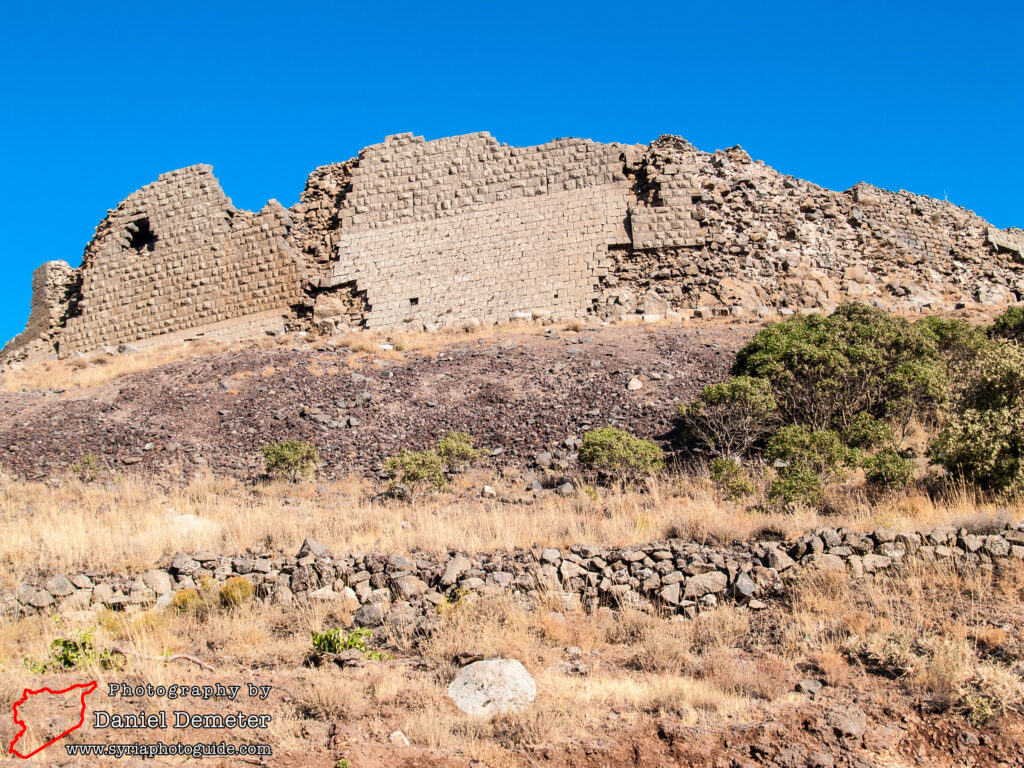
Salkhad (صلخد), a predominantly Druze town to the southeast of al-Suweida (السويداء), has had a long history dating to pre-Islamic times. The remains visible today date mostly from the 13th century. Most striking of these is the Ayyubid citadel built in 1214-1247, about the same period as the fortification of the amphitheater in Bosra (بصری). Both were to serve as southern defenses of Damascus (دمشق) against the Crusader presence in Jerusalem. The site was probably earlier occupied by a fort built by the Egyptian Fatimid Caliph, al-Mustansir, in 1073-1074. The citadel was restored in 1277 by the Mamluk Sultan, Baibars. The fortress was built into the crater of a volcano, but the walls which slope steeply down the outer face of the vent are now badly crumbled. The site was controlled by the Syrian military and off-limits until recently, but is now open to the public.
Below the castle, to the south, are the remains of a minaret from the Ayyubid period, erected in 1232. The design is hexagonal in shape, a plan unique in Islamic architecture but probably borrowing from Roman models. It was built using local basalt stone, black with a dark red section at the top, interrupted by two bands of white with finely inscribed Koranic passages and niches on each face. The original mosque has disappeared but apparently resembled in style that of the Mosque of Umar in nearby Bosra (بصری).
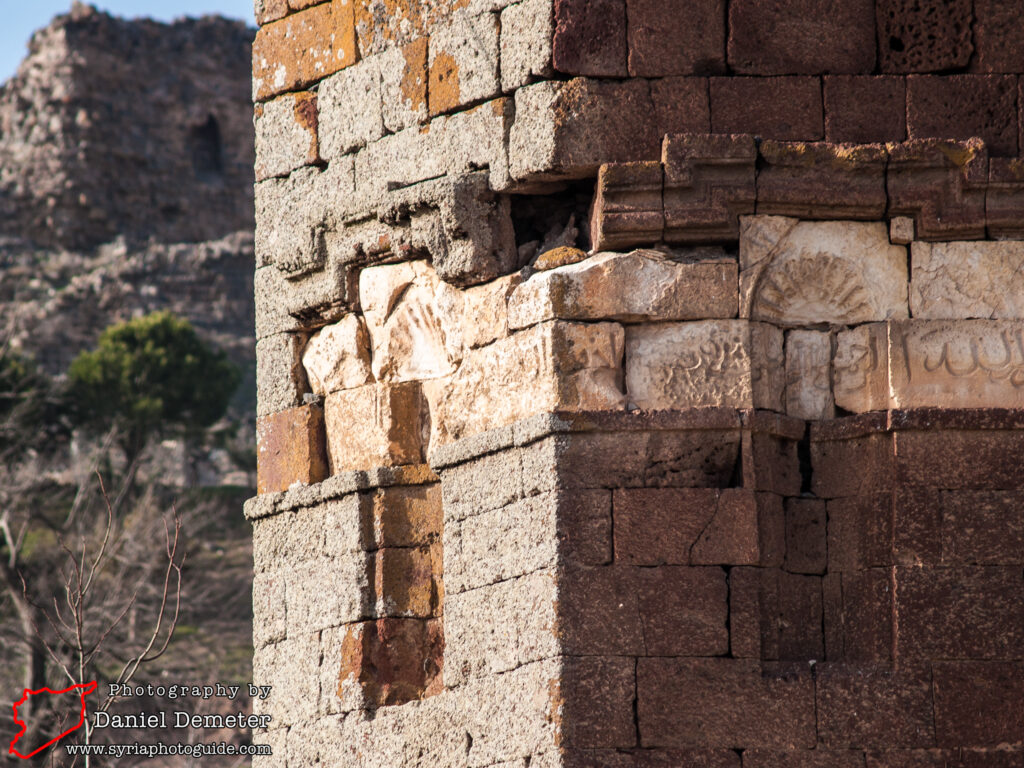
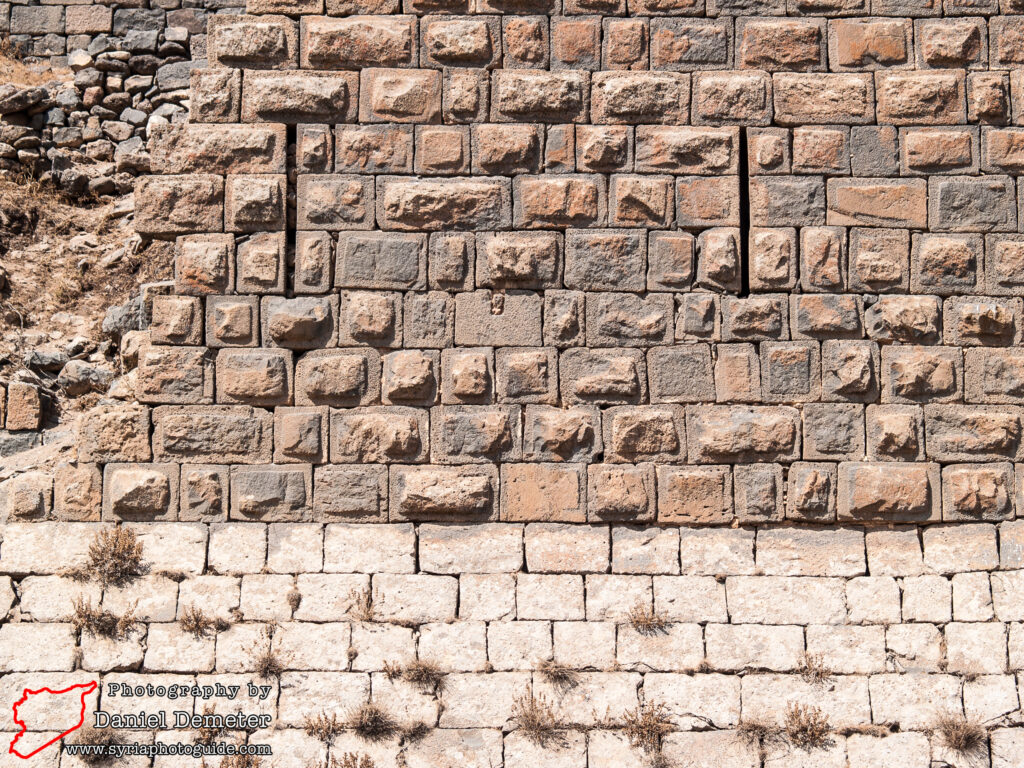
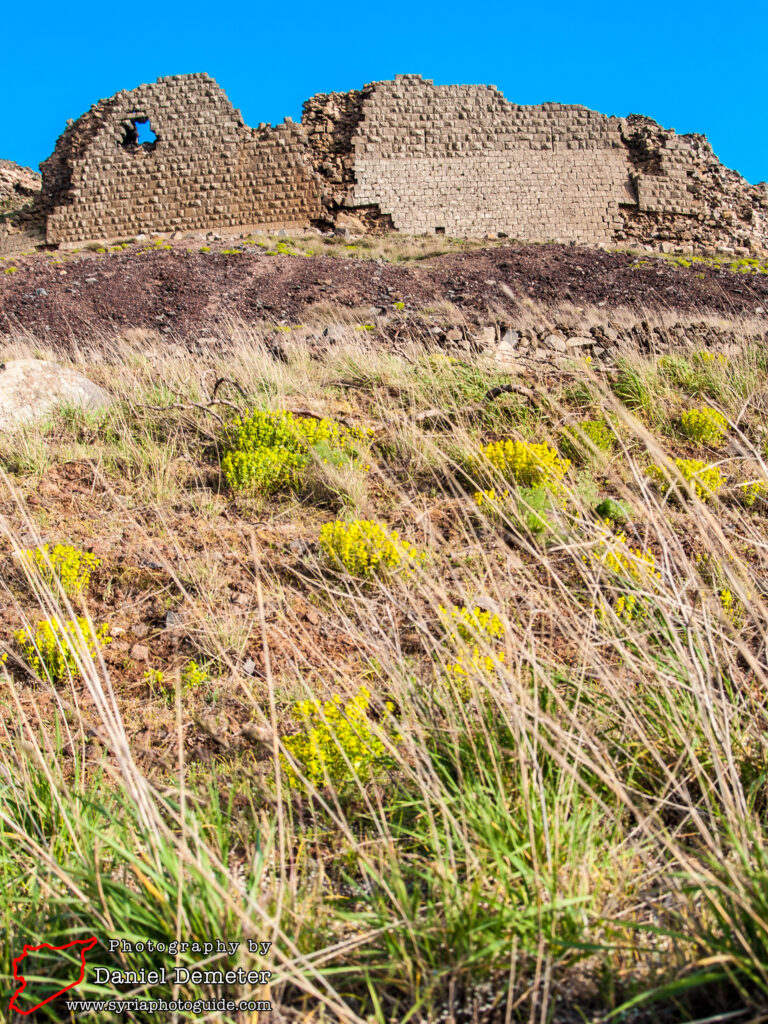
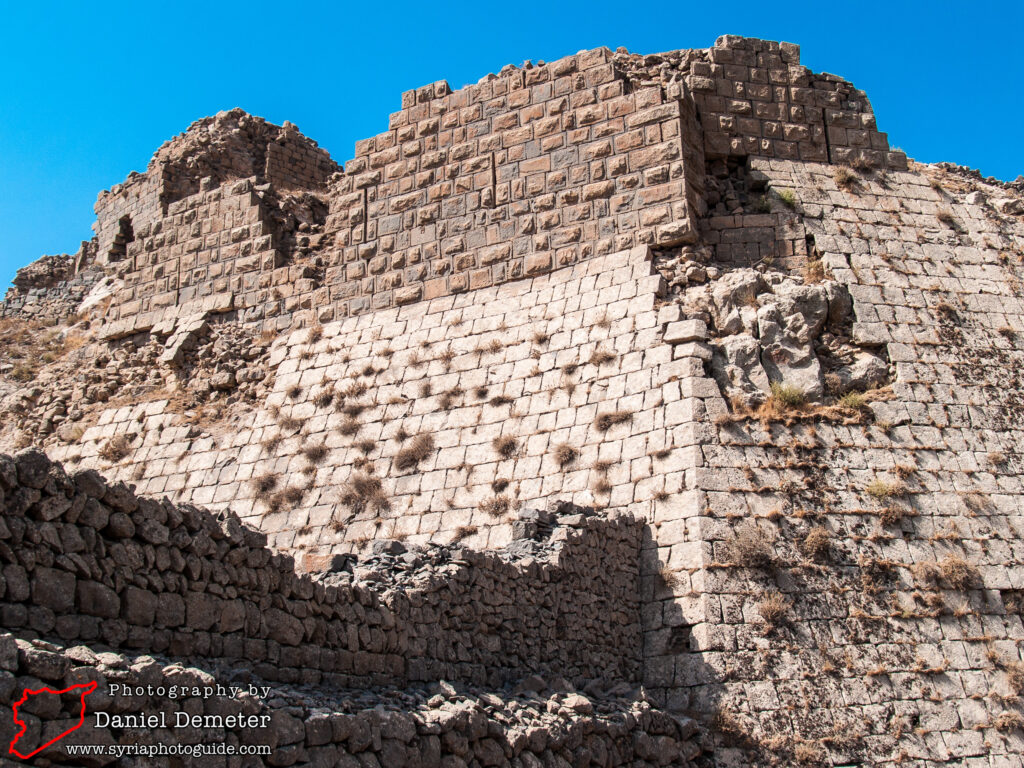
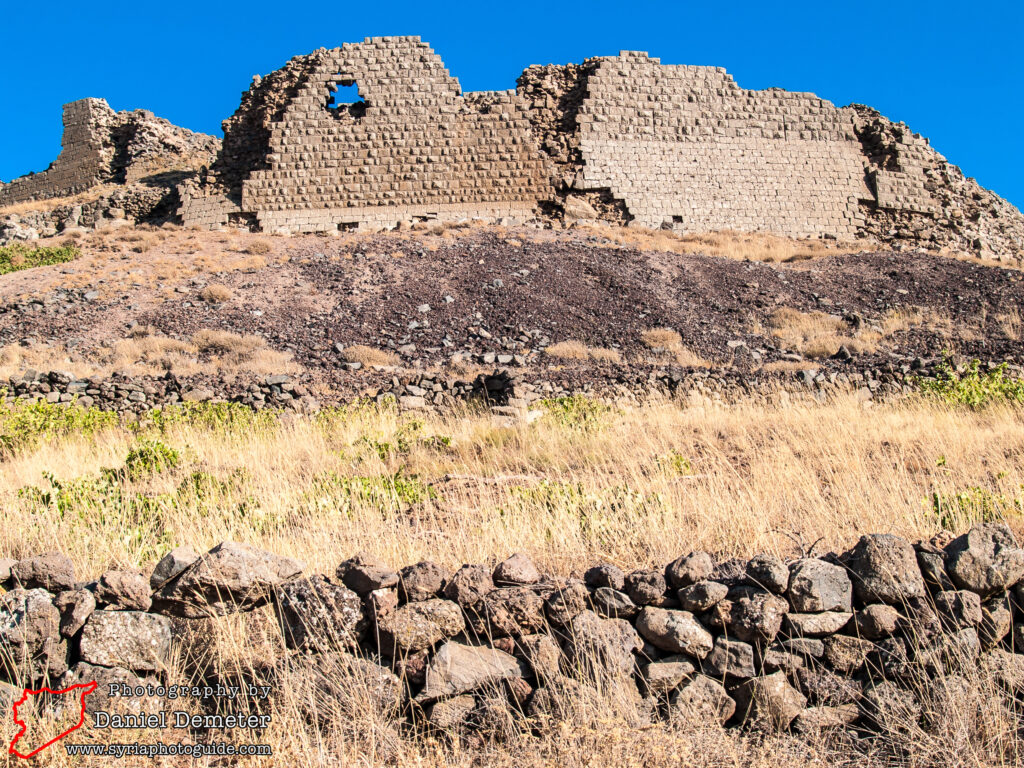
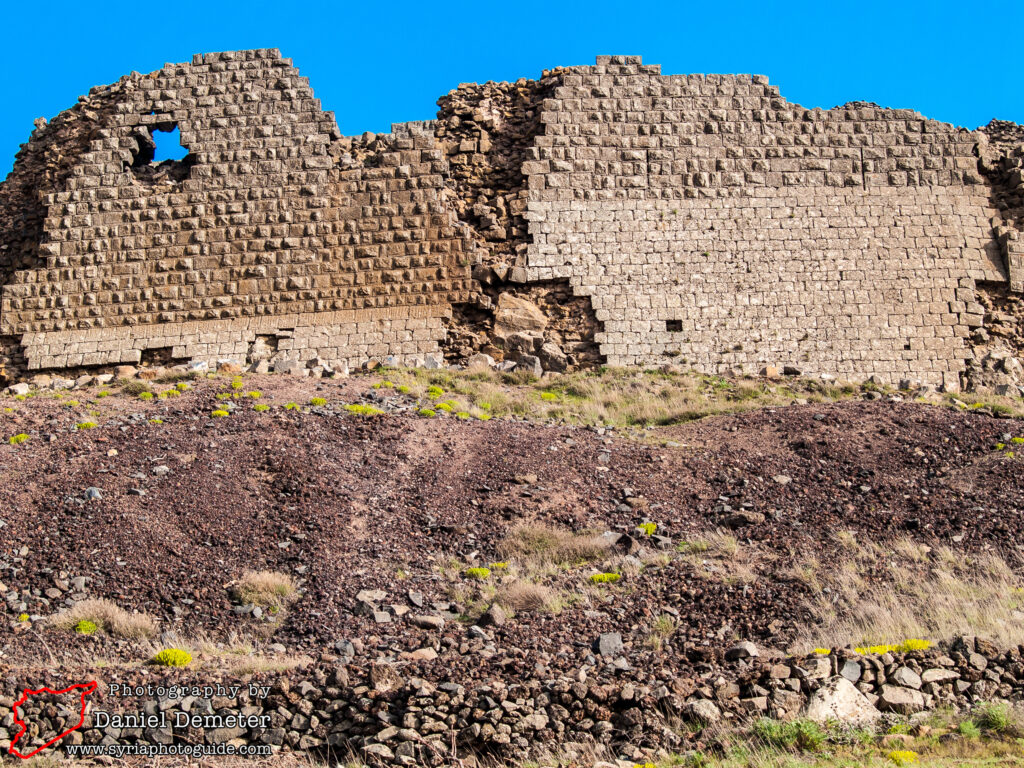
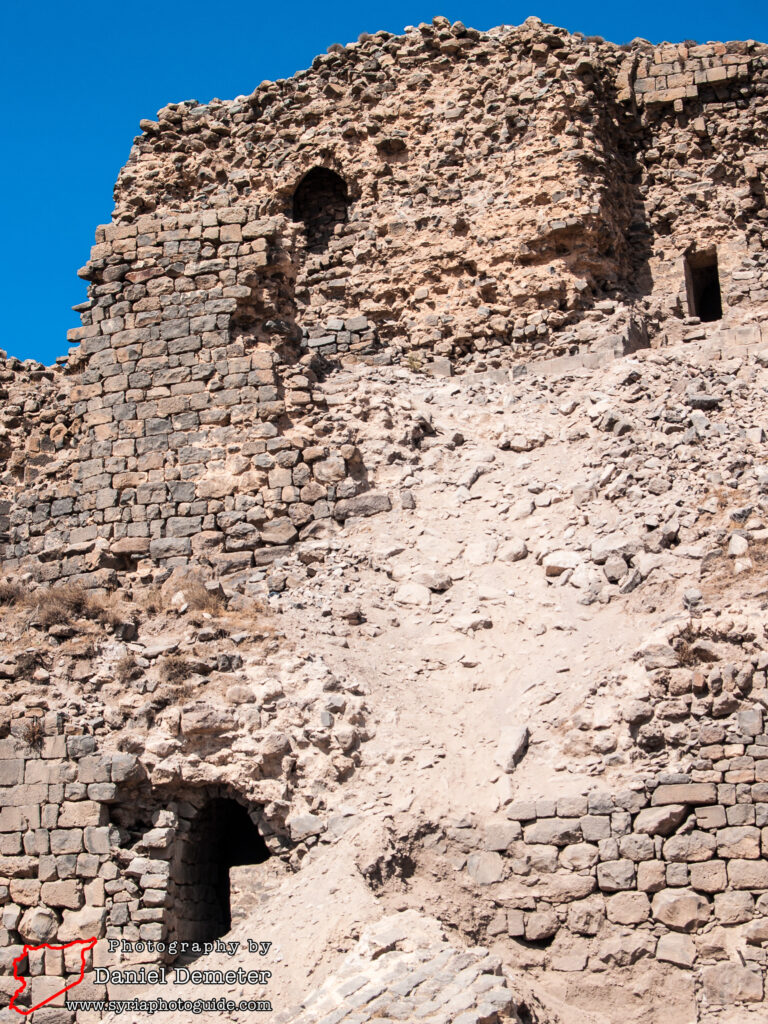
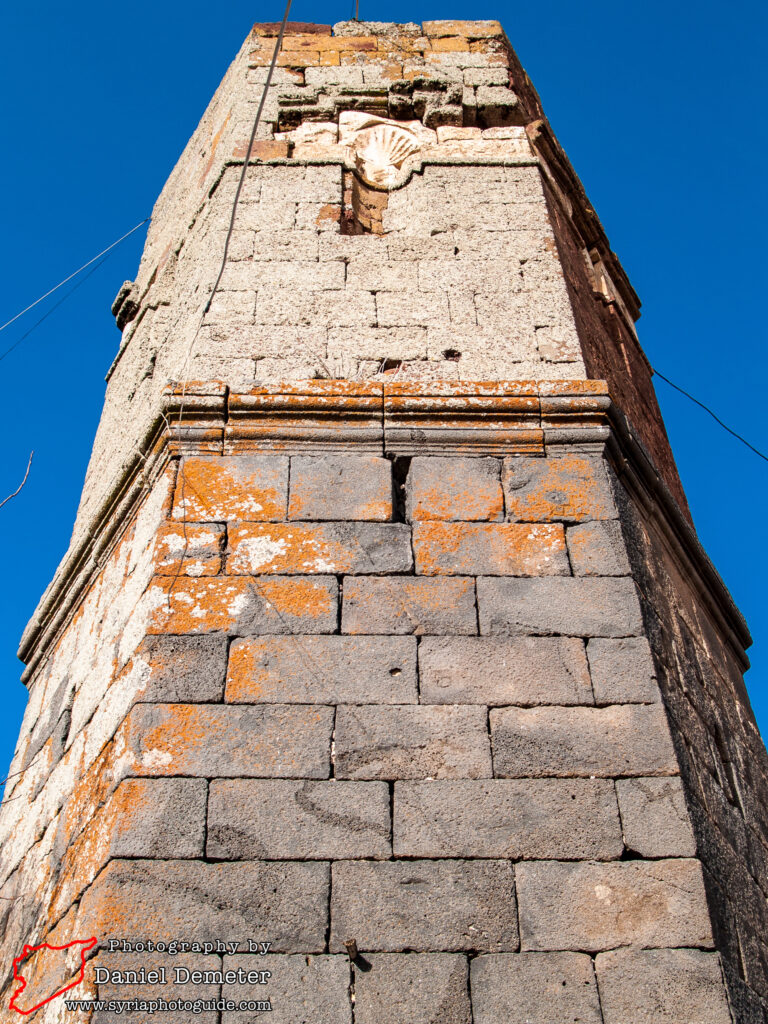
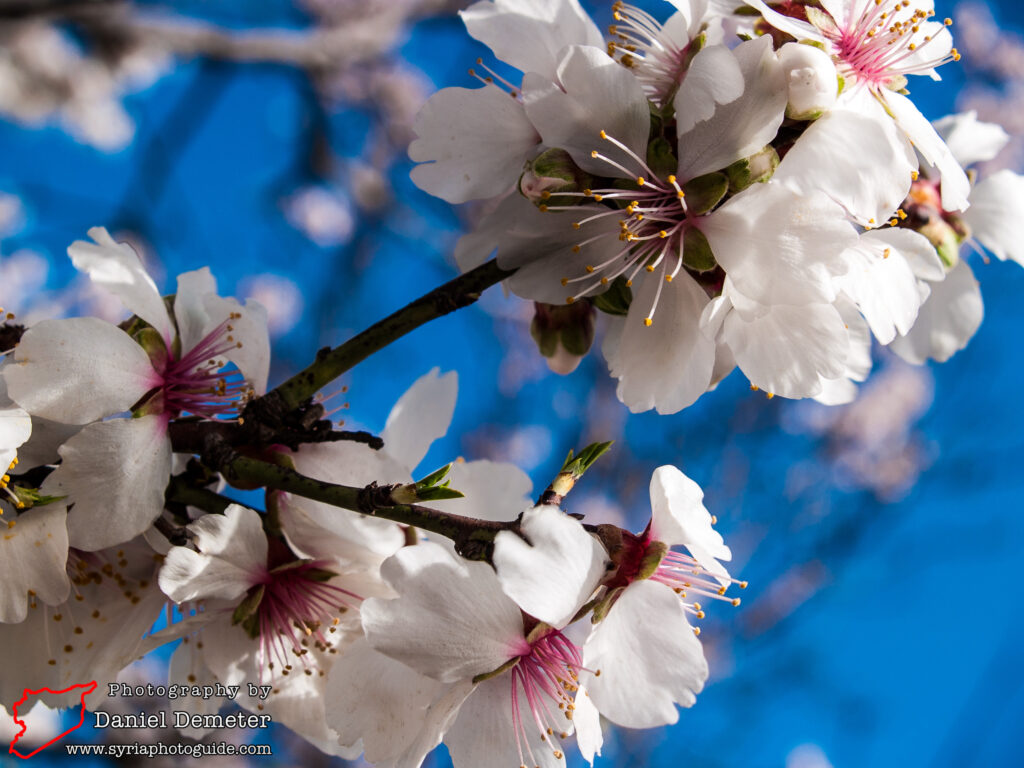

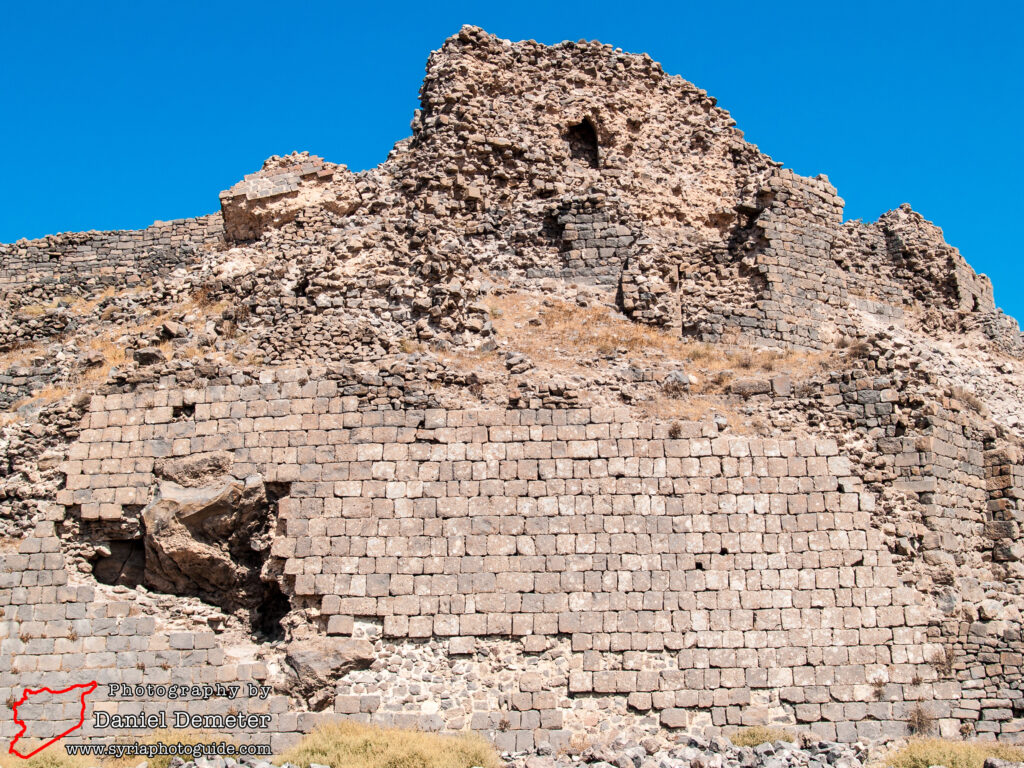
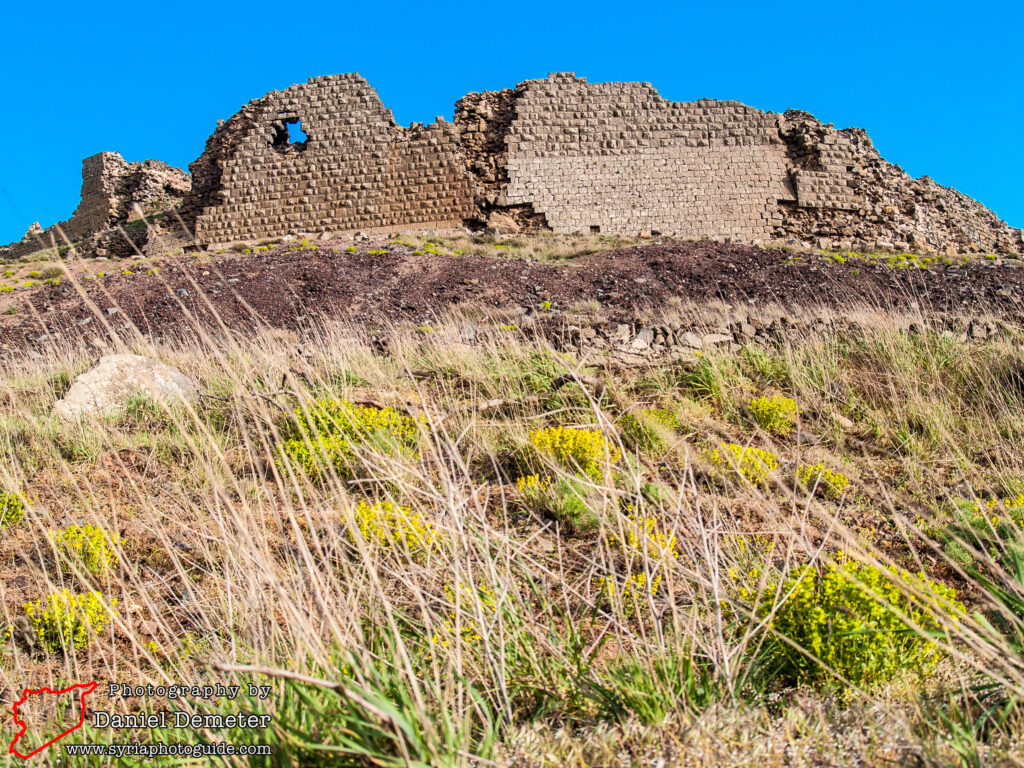
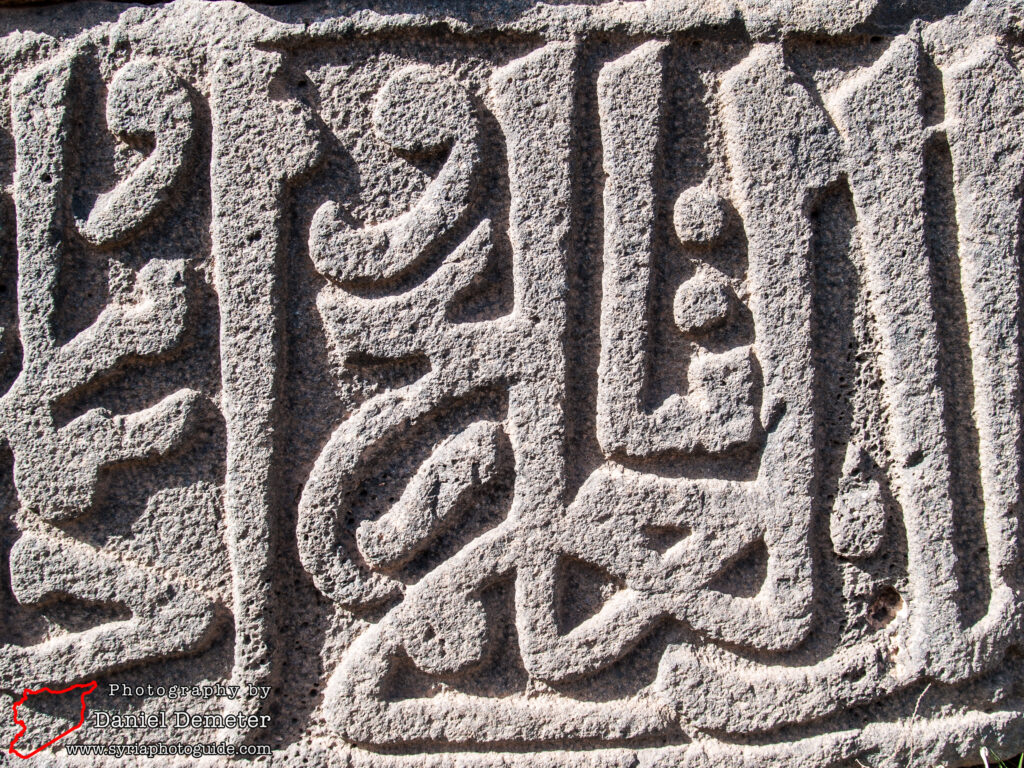
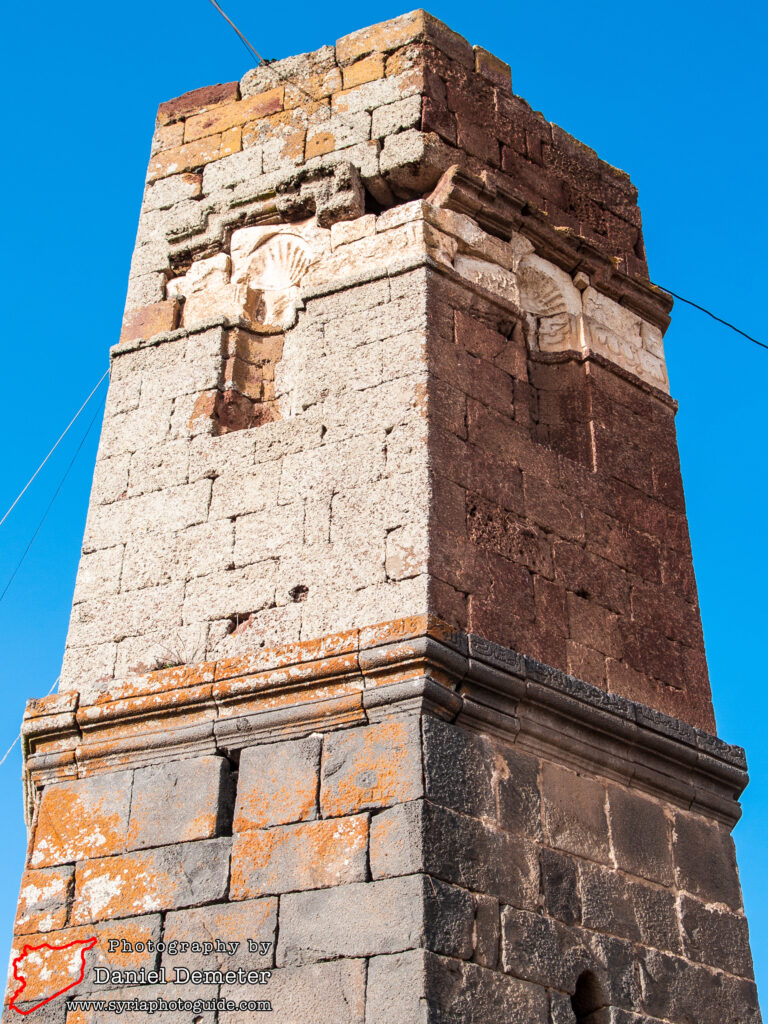
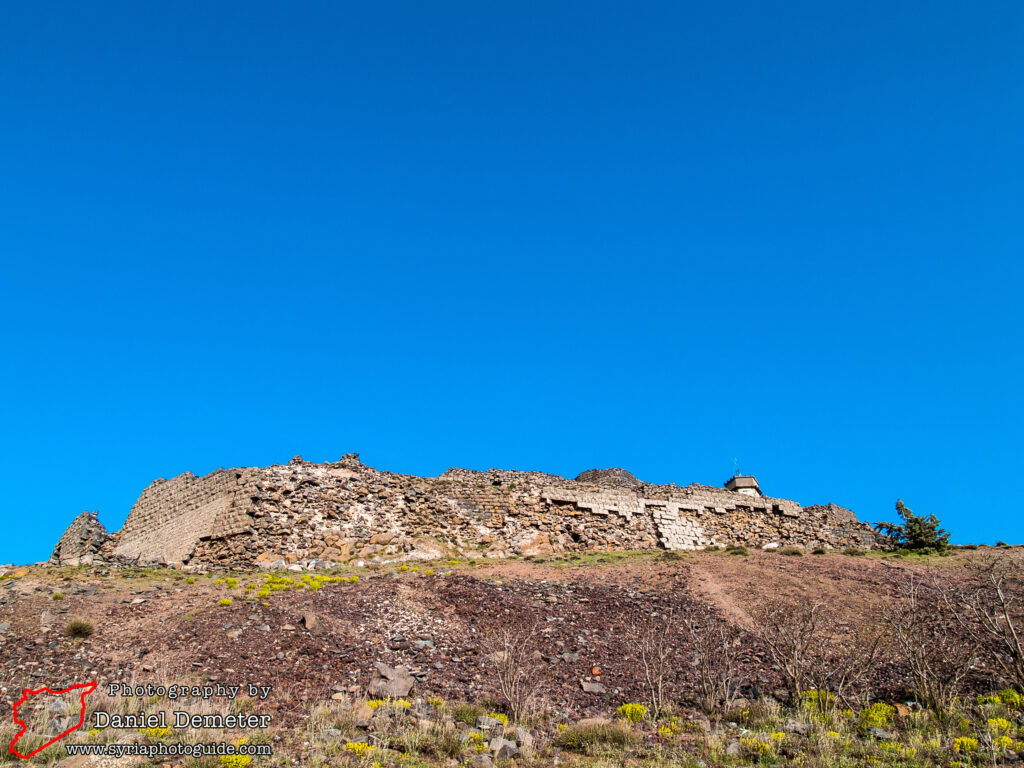
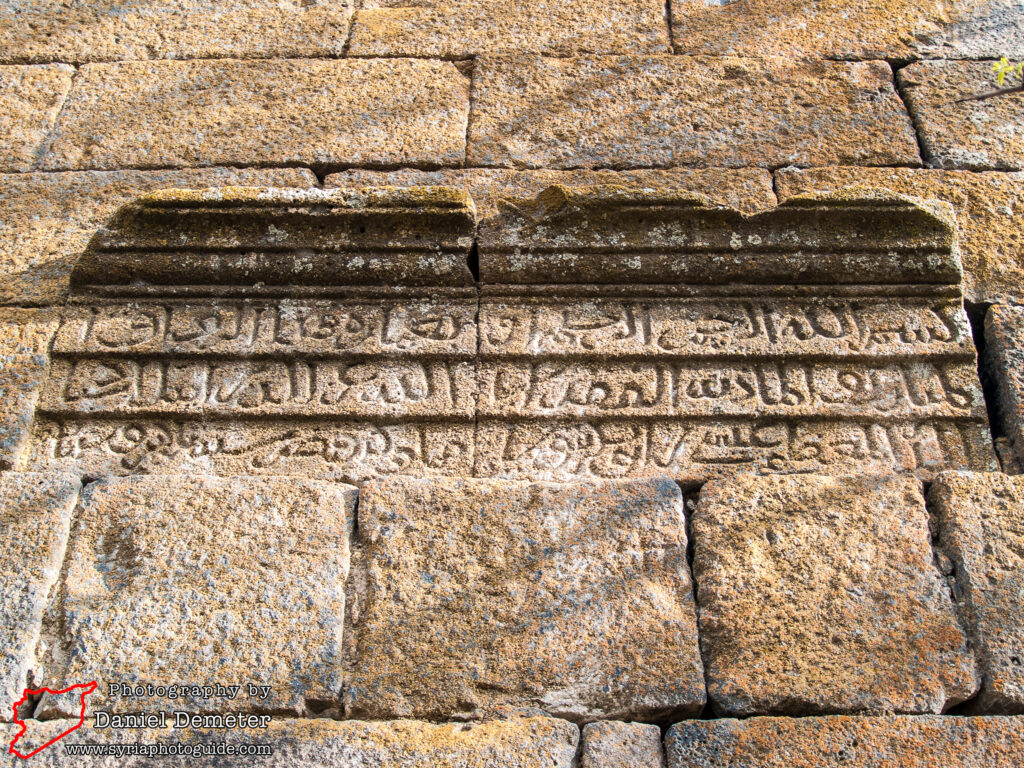
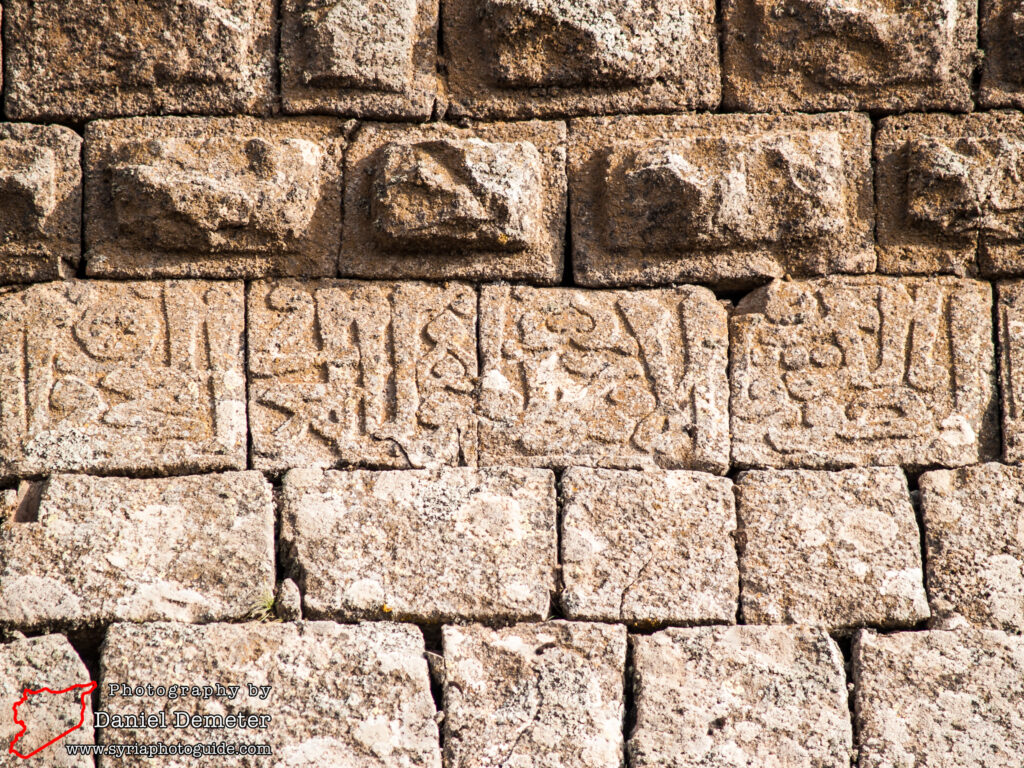
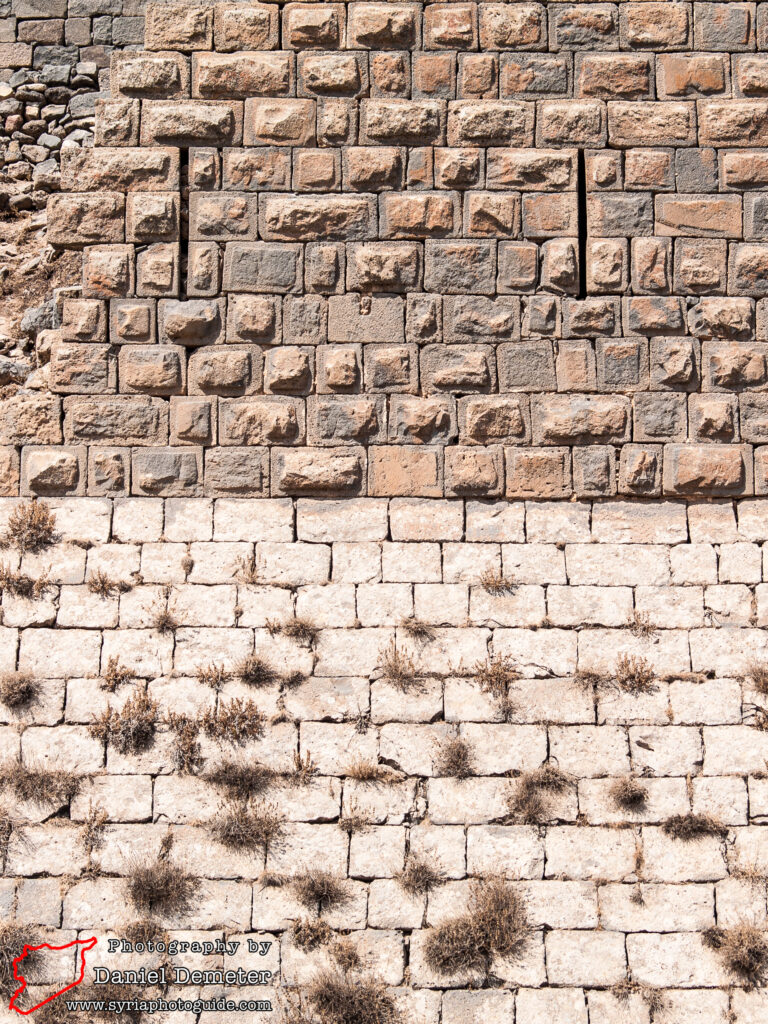
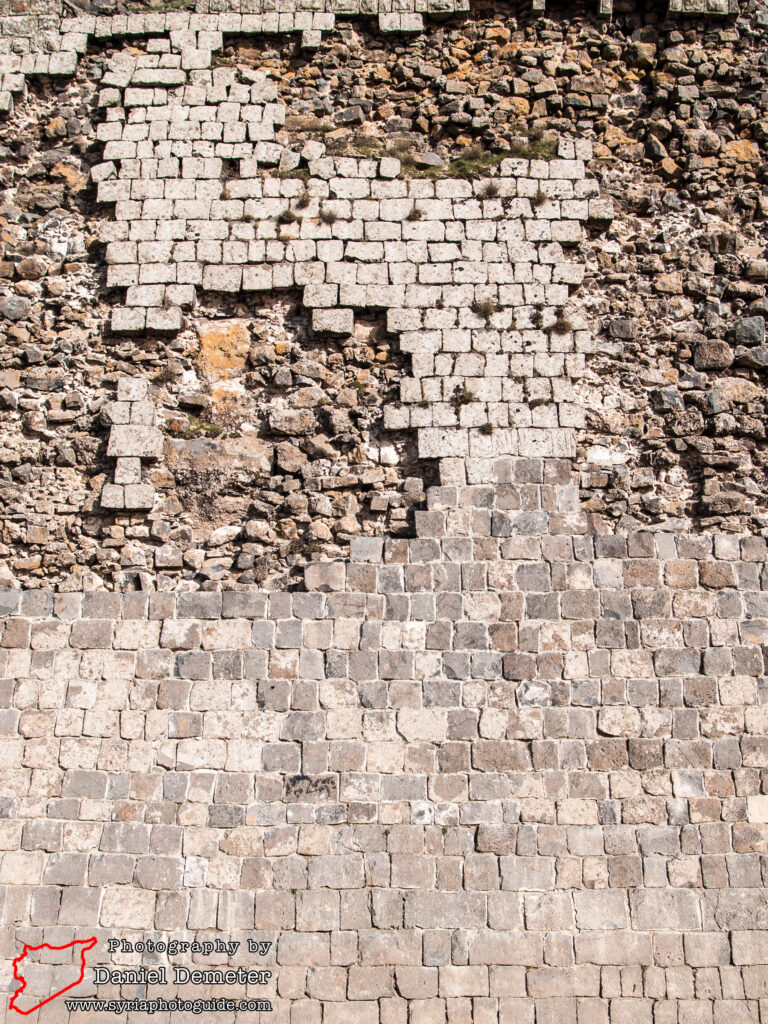
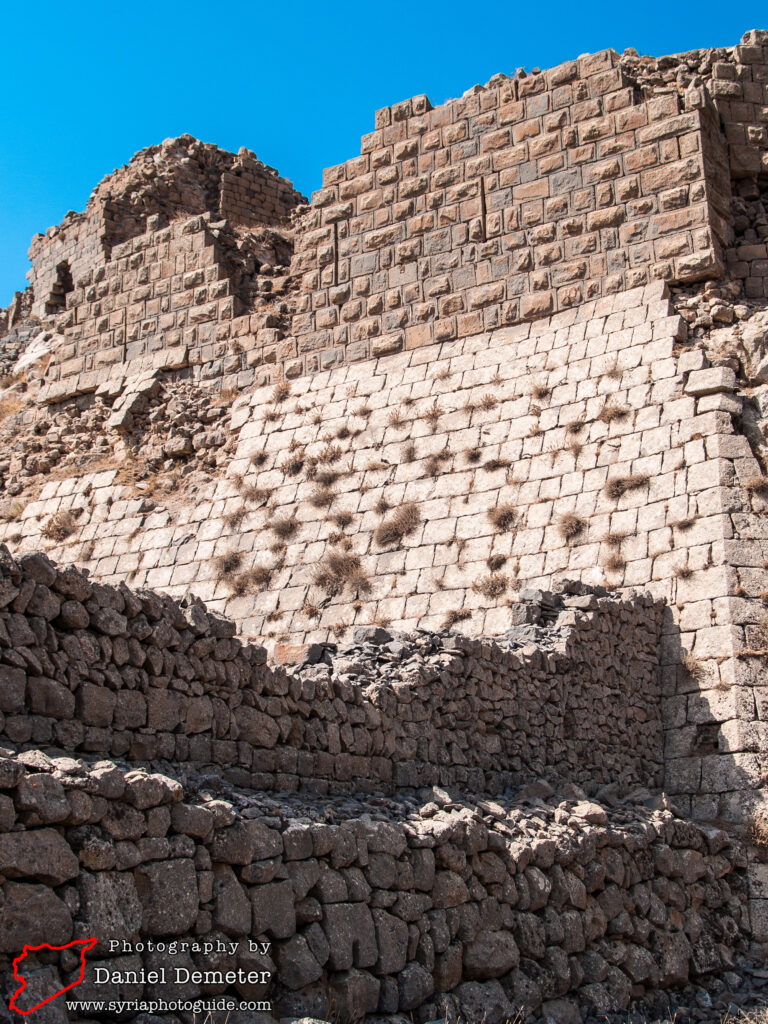
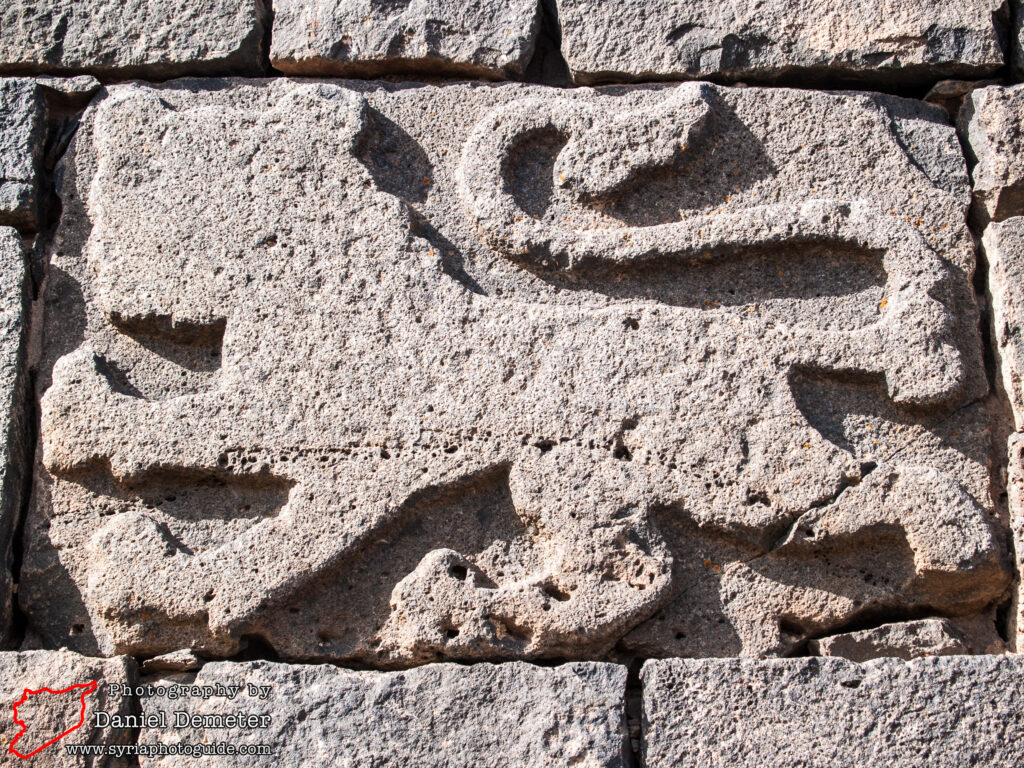
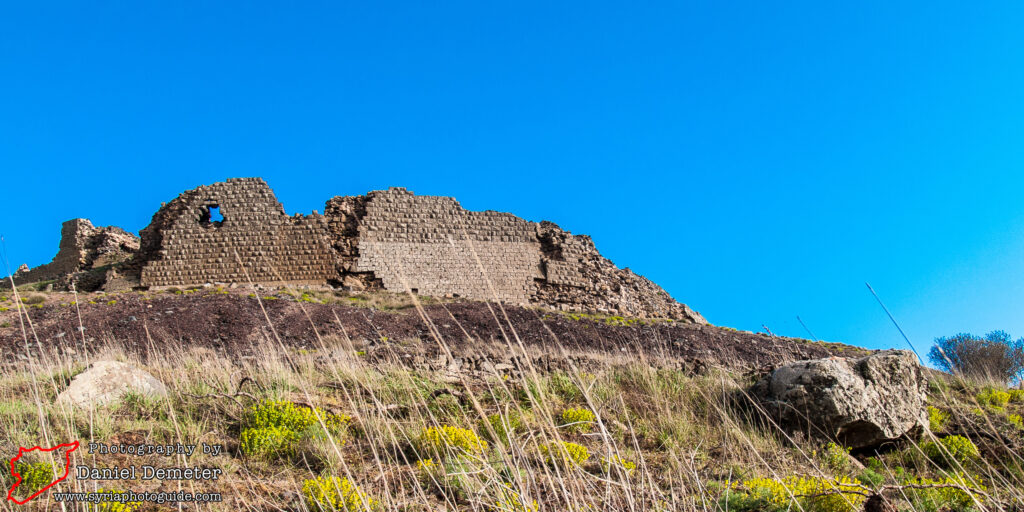
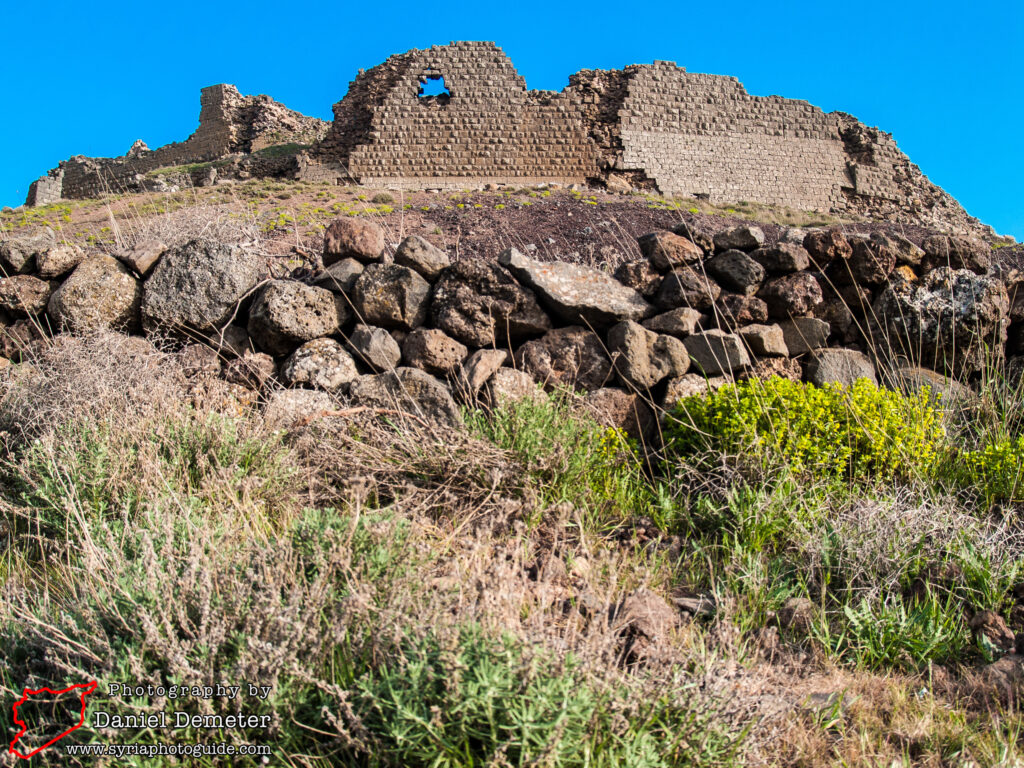
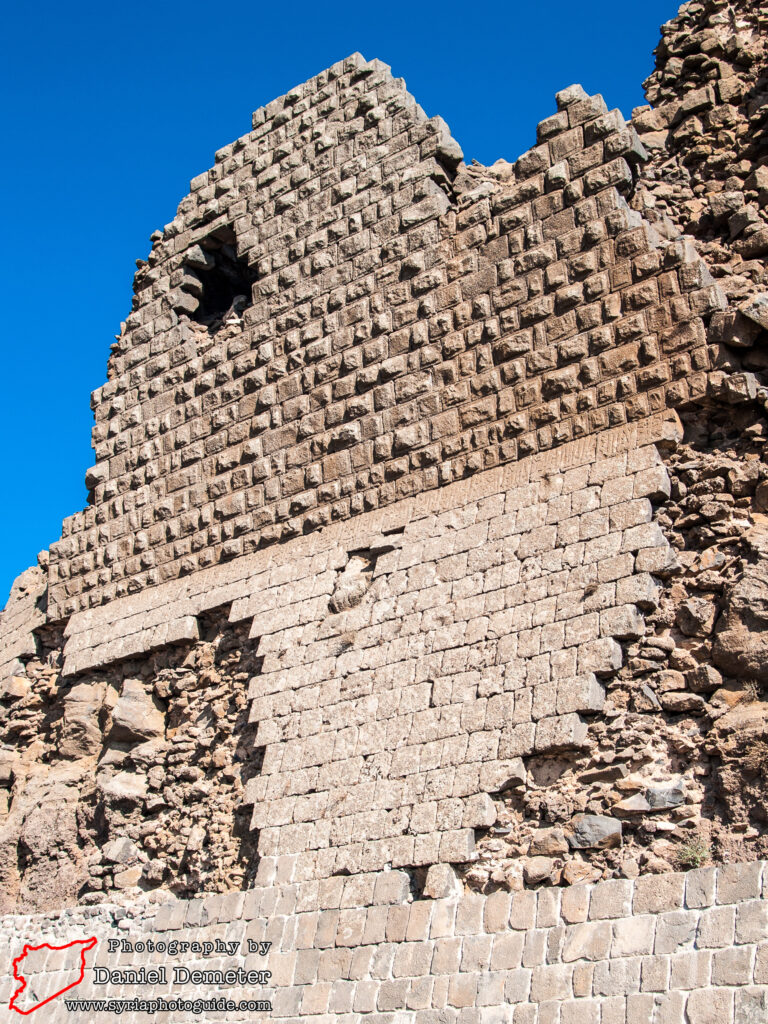

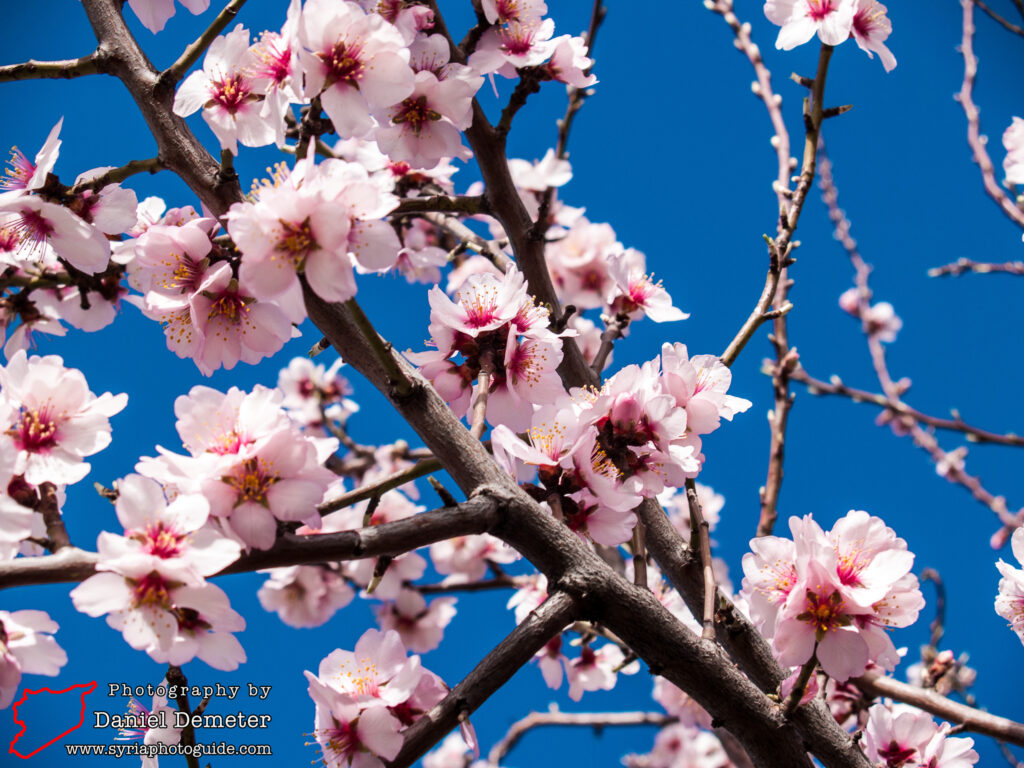
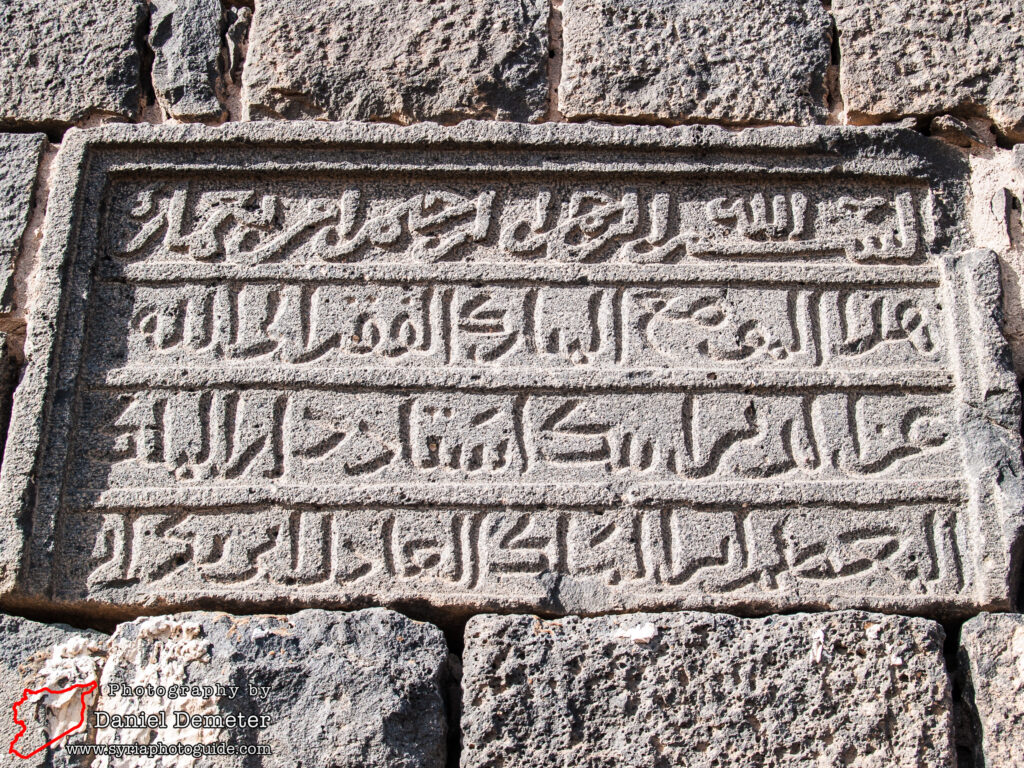
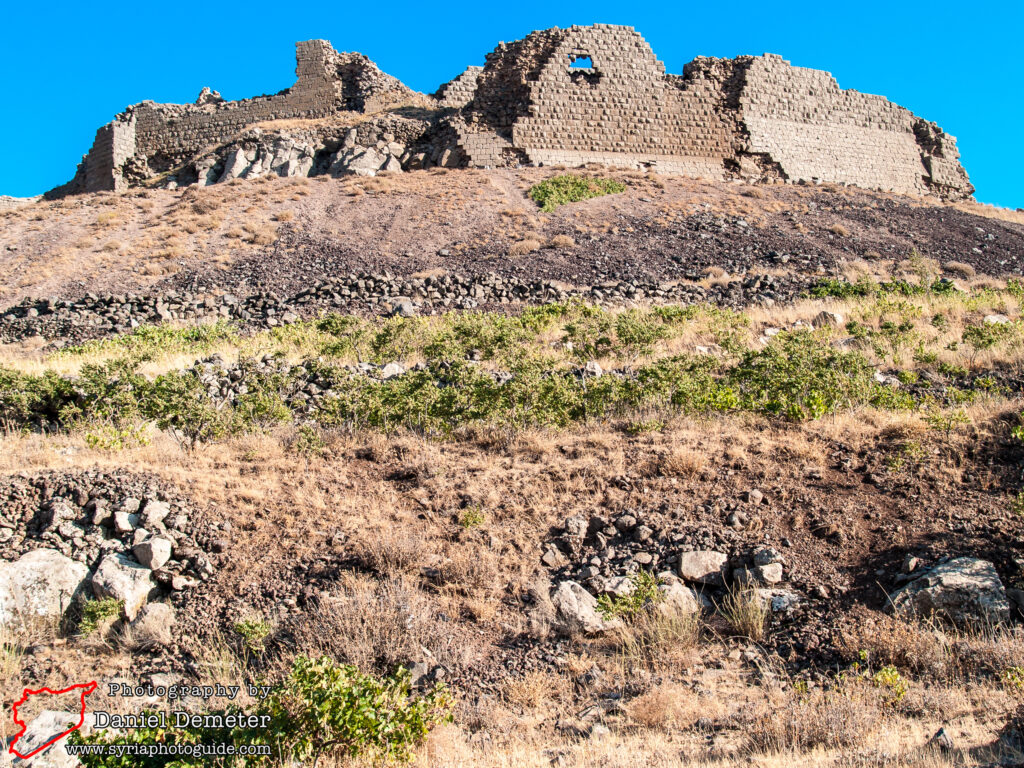
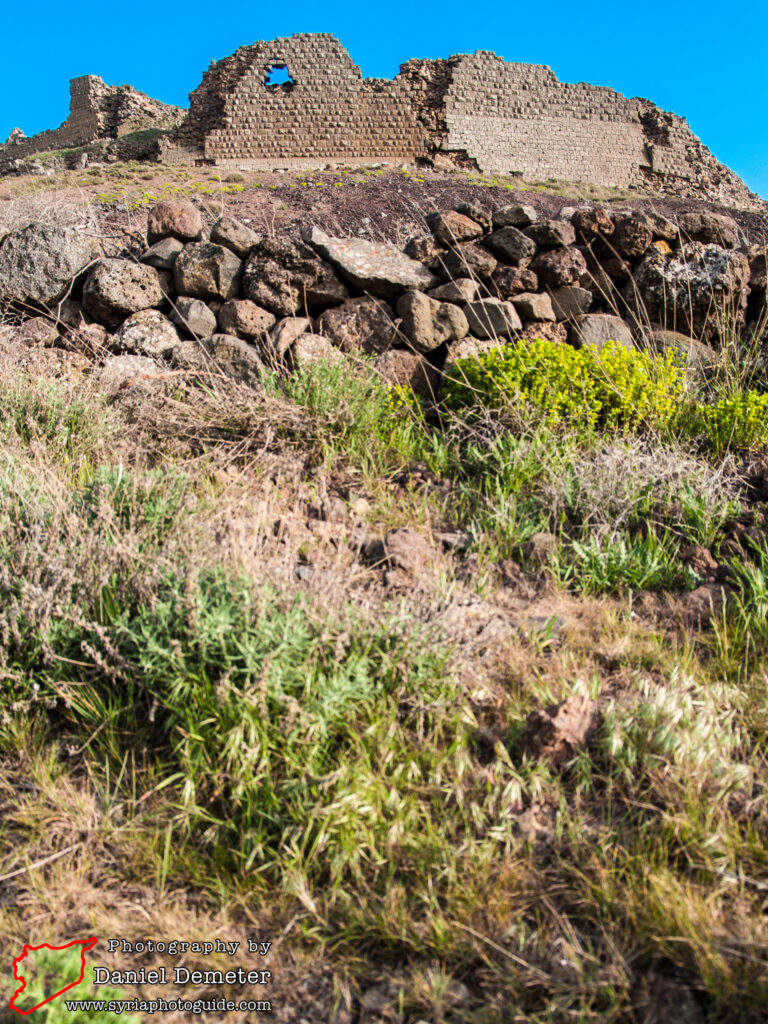
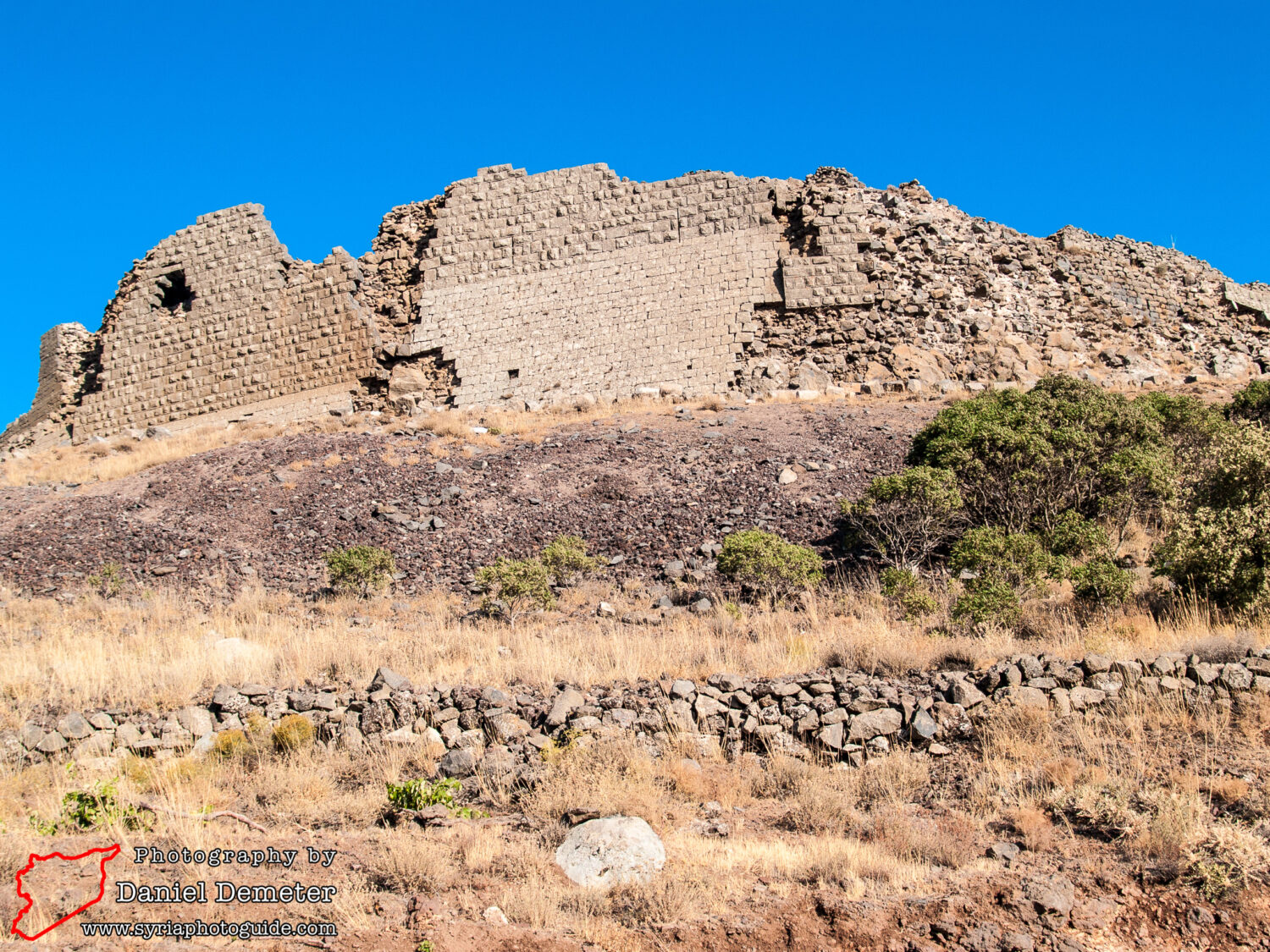
Getting There: Microbuses frequently travel between the main bus station in al-Suweida (السويداء) and Salkhad (صلخد). Occasional large buses make the same journey for a slightly lower fare.
Coordinates: 32°29’37.59″N / 36°42’37.70″E
Transliteration Variants: Sulkhad
Rating: 6 / 10
